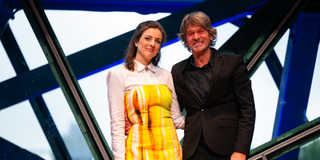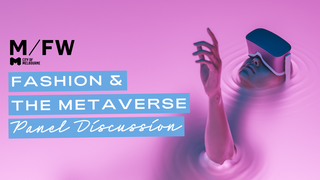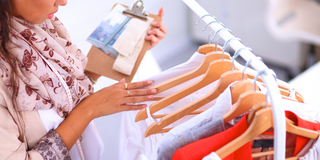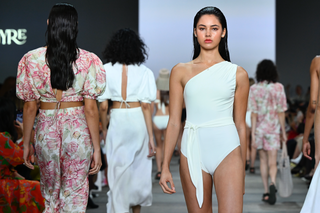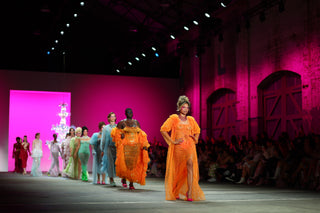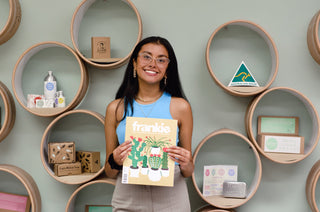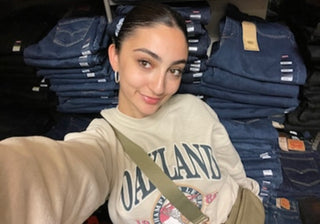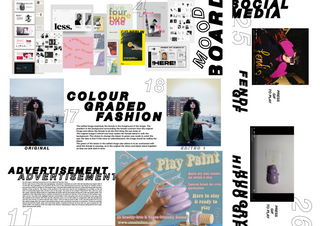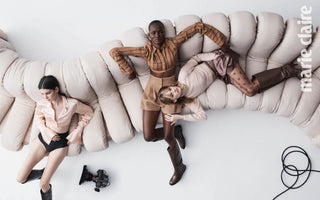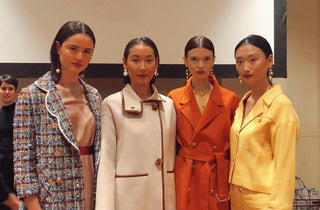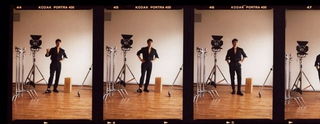T.M. x M/FW Metaverse and Web 3.0 Panel Discussion Wrap Up!
It’s been two weeks since our Melbourne Fashion Week Metaverse and Web 3.0 panel discussion and we can’t believe time has already passed so quickly. If you missed out don’t worry, we’ve wrapped up everything so all your burning questions about Digital Fashion and the Metaverse won’t go unanswered!
This discussion has certainly made us realise that the future will be digital one way or another and we can safely say we’re excited! A digital future provides opportunities for innovation like never before. From a variety of backgrounds, our amazing 4 panellists have provided us with industry insights into this ever changing space, sustainability, NFTs, the Metaverse and Web 3.0, just to name a few, let’s go ahead and meet them:
- Eugene Leung is the creative director and founder of fashion brand INJURY and has been in the fashion industry for the last 15 years.
- 3 years ago he dived into the digital sphere when he started making CGI films and digital fashion.
- Eugene currently designs and sells digital collections and has recently won best digital fashion film at the Berlin fashion film festival this year.
- Caitlin Lomax is the founder of AR and VR virtual production studio INTR. She is also currently the senior producer at Load VR.
- Caitlin mainly works in VR, games, her most recent project was the producer for Guild of Guardians. She also was a model prior to this career change working with Chanel, Prada and Louis Vuitton.
- Darren Vukasinovic runs a virtual AR studio Ignition Immersive and has been in VR AR for 8 years.
- Darren originally comes from a film making background where he wrote and directed. He is passionate about this industry and “sees the power of immersion with VR and AR from an empathy angle”.
- At the moment he is currently working on commercial and training brand activation. But has projects in 2023 with location based entertainment, the idea of mixed reality and merging of the digital and physical environments.
- Daniel Avakian has been a fashion designer for 20 years.
- He recently debuted a collection at Australian Fashion Week where human and hyper realistic avatars walked the runway.
- Daniel’s recent startup, Real Time Fashion is bringing a product to the market in real time, within 7-10 days. During NYFW he brought a metaverse asset into real life for his finale piece.
The Why’s and How’s of Digital Fashion
We kicked off the panel by discussing the whys and hows of digital fashion; Why did this come about and for what reason? Our panellist, Darren shared a few thoughts about how the pandemic influenced this boom in NFT’s, and how digital fashion became the forefront of the industry.
Darren talks about how the pandemic has normalised the digital world, “Reflecting on the pandemic, all of us were living in digital lives and none of us had an assertive digital identity. So we curated our digital identities on different platforms like zoom and teams. There is an underlying psychological layer that says what is my identity when I’m living in a digital space?”
He goes on to say that “Thanks to Covid we have this corporate new norm where half is in office and the rest of the time they are zoom calling, it's what they project in front of the camera. If they could wear a digital dress or a digital jacket, it adds to the person's personality, almost image enhancing.”
Caitlin expresses that, “When they are in virtual worlds it doesn’t really matter who they are sitting at the desk or what is limiting them in the real world. When they are in that world with their friends they are whoever they want to be - I really love that about the industry”.

Streamlining Sustainability
This conversation led to how brands can use digital fashion to connect with their customers, making the shopping experience unique while also decreasing the waste and sustainability issues that are dominant in the fashion industry currently.
Daniel refers to Real Time Fashion and how this makes the sampling and rendering process much easier than solely creating physical garments.
“With digital technology, we can create one sample and we can simulate the rest. You see the garment online, purchase the garment and we send you a link to a 3D body scan and then we can custom make you a physical garment, a dress or blazer from the simulated garment. It’s taking a metaverse asset into the real world and vice versa is where you are going to see the boom!”
Eugene adds that “right now we can test everything, not just the production process but we can show people and our clients how the product looks like. We can filter out the ones that no one wants and focus on the ones that we think are good. I think now the digital fashion scene can basically satisfy the desire of consumer consumption in the sense but in a more sustainable way.”

Image Credit: Daniel Avakian
Fashion and NFTs
Utility was a common word used throughout the night, but what does this really mean and how does it relate to the topic of NFT’s and fashion? Utility is the purpose of what an item is used for.
Caitlin broke this down for us, “in the NFT world, utility is giving your NFT not just value/worth but actually something you can do with it, does it give you access to something? Does it give you voting rights? The utility of your NFT isn’t necessarily wearing it on your avatar”.
Darren questions this idea, “in an avatar world, the question in my mind is there are probably thousands of designs you pay next to nothing for an avatar, why would you pay $1000 for it?”
Daniel agees and shares that NFT’s alone are quite difficult to sell and that it would be best to have some sort of unlockable content that the customer gets in addition to the purchase of the NFT. “Having the ability to unlock more features through digital fashion as well as ownership of the digital fashion asset itself and then being able to sell that on a marketplace is the incentive.”
On the flip side, Eugene discusses NFTs from a brand marketing perspective, “it can be a different way to market your physical products, digital fashion can be your marketing campaign. It doesn’t always have to be designing digital clothing to sell digital clothing.”

That's the round up! The evening was a huge success thanks to all the panellists who made it such an enlightening and educational night. We hope that everyone learned something new, if you want to watch the Panel, visit our Youtube here.
If these topics and ideas were of any interest to you, we cover these in our Bachelor of Fashion Business! If you want to learn more about this degree keep reading here.
